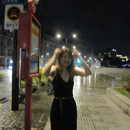Hello… hello… hello… *Blows in your left ear*
Welcome… welcome… *Blows in your right ear*
To your guide to:
Ayyyyy… Esssssss…
Emmmmm… *nails tapping on a wooden surface*
Arrrr….
Arrr…
Arrr…
With a simple yet intricate set-up of a mic and seemingly random but intentional hand movements, ASMR has entranced millions over the internet with the addictive soothe it brings.

Short for “autonomous sensory meridian response,” ASMR describes a tingly sensation that usually begins from the back of the head and tickles down the spine that occurs when people are exposed to specific visual or auditory stimuli. These specific stimuli, or triggers, can range from tapping on different textures…
to destroying makeup…
and elaborate forms of roleplaying with niche sounds and interpersonal engagement with the viewer.
Depending on the viewer, different triggers can lead to varying levels of pleasant paresthesia—that tingly sensation you feel on your skin, despite having no physical contact. It makes you feel simultaneously relaxed and mesmerized as a euphoric rush lulls you to sleep.
From what was once a guilty pleasure to now a widely talked about relaxation method, the phenomenon of ASMR has seen much exposure and growth in the past decade. Many experience the feeling of tingles before knowing what ASMR is, hence making the hard-to-identify sparkling sensation a confusing, and even guilty response to stimuli that seem random. Many early experiencers of this often talk about feeling embarrassed about this effervescent pleasure, and the term “brain-gasm” was hushed around until the term “ASMR.”
Now with an identifier, the ASMR community then grew steadily on YouTube. Aiding many with their stress and insomnias or being used as accompanying white noise during study sessions, the recognition of its benefits led to a gradual de-stigmatization of the genre. It has also made its way into pop culture, from W magazine’s famous “[celebrity] Explores ASMR” interviews to Fenty Beauty using it as a marketing technique.
Due to the large and continuously expanding community, just searching the term ASMR on YouTube will lead you to a multitude of different choices—which can seem intimidating. Below are a few sub-genres of ASMR that may help you find your niche!
Classic ASMR: the largest genre, and usually a good starting place if you are unsure of what you like. It involves lots of tapping and brushing on different textures and is usually coupled with soft speaking or whispering.
Food ASMR: Going from cooking to eating, this sub-genre has a lot of crunches, chopping, and chewing for triggers. Mukbang, a type of eating show, is often found in this genre too.
Crafty ASMR: Slime, painting, and soap-carving are often found under this genre as crinkles and crushing noises sound.
Roleplay: the ASMR artist usually takes on a specific role that allows for specific sounds. It is often interactive with the viewer (personal attention) and has a storyline. Some of the most popular roleplays are hairdressing, make-up application, and cranial nerve examinations.
Happy relaxing!


